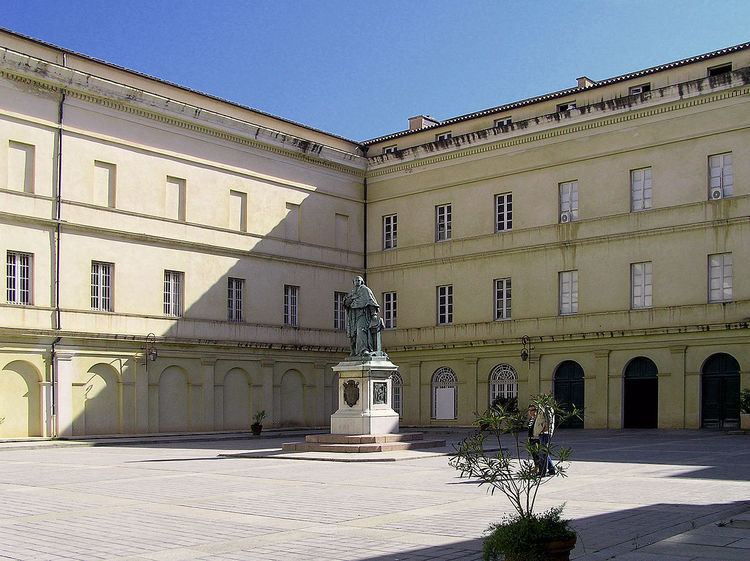Phone +33 4 95 26 26 26 | ||
 | ||
Hours Closing soon · 10:30AM–6PMWednesday10:30AM–6PMThursday12–6PMFriday12–8:30PMSaturday10:30AM–6PMSunday12–6PMMonday10:30AM–6PMTuesdayClosedSuggest an edit Similar Maison Bonaparte, Ajaccio Cathedral, Calanques de Piana, Scandola Nature Reserve, Filitosa | ||
Muse e fesch
The musée Fesch (officially, Palais Fesch-musée des beaux-arts) is the central museum of fine arts in Ajaccio on Corsica. Located within the gated Palais Fesch, it is in the town's Borgu d'Ajaccio quarter. It was established by Napoleon I's uncle, cardinal Joseph Fesch (a Prince of France from 1807), in Fesch's birthplace.
Contents
- Muse e fesch
- Mapping 3d sur le mus e fesch pour les voeux 2016 de la commune d ajaccio
- Location
- History
- Features
- Italian school
- Other schools
- References
Mapping 3d sur le mus e fesch pour les voeux 2016 de la commune d ajaccio
Location
The Fesch museum is located in Ajaccio, the birthplace of its founder, the cardinal Joseph Fesch. It is housed in the 19th-century Palais Fesch on Rue Cardinal Fesch. The Palais Fesch also houses a college of that name, which contains a large collection of pictures, though most of them are copies. There is also a library of 30,000 volumes, and a collection of Corsican minerals. The courtyard contains a bronze statue of Cardinal Fesch. In the right wing of the palace is the Chapelle Fesch, built in 1855, containing the tombs of Letizia Ramolino, mother of Napoleon, and of Cardinal Fesch. The Bibliothèque Municipale, an adjacent building, contains rare antique books. It was completed in 1837.
History
The initiative to build the museum was taken by Napoleon I’s maternal uncle, cardinal Joseph Fesch (1763-1839), archbishop of Lyons and the primate of the Gauls. It was Fesch's wish to establish an Institute of Arts and Sciences in his hometown. Before he died in 1839, Fesch donated 1000 art works including 843 paintings, from his large collection of more than 17,000, to the museum.
The museum was first designed in 1806 but construction started only in 1827 with the efforts of Mgr Péraldi, the cardinal's friend and agent. In 1829, the construction was interrupted by the then government of Bourbons as it was considered a slight to the government because its opulent design and display and was done by Péraldi who had been exiled to Rome following the fall of the empire. The construction was resumed in 1833 and completed in 1852, the Corsican architect Frassato directed this stage of construction. However, Fesch did not live to see the completed museum as he died in Rome in 1839.
Features
The most impressive painting collections at the museum are arranged in several halls in the specific periods of the Early Italian and Renaissance, the Roman Baroque and the Neapolitan Baroque. The museum contains one of France's finest collections of Italian old masters, including Botticelli, Giovanni Bellini, Cosmè Tura, one of the most important Napoleonic collection of paintings and memorabilia and a Corsican Collection of paintings. The four-storey building which displays more than 400 works of the collection in 27 rooms features the Napoleonic Collection in the basement. Niveau 1 contains 16th and 17th century Italian paintings such as Botticelli's Virgin and Child, Titian's Man with a Glove, and Paolo Veronese's Leda and the Swan. Niveau 2 features 17th- and 18th-century paintings, including Poussin's Midas à la source du fleuve Pactole and Recco's Ray on a Cauldron with Fish in a Basket while the Grand Gallery, also on this floor, hosts large canvases, such as Gregorio de Ferrari's Holly Family.
